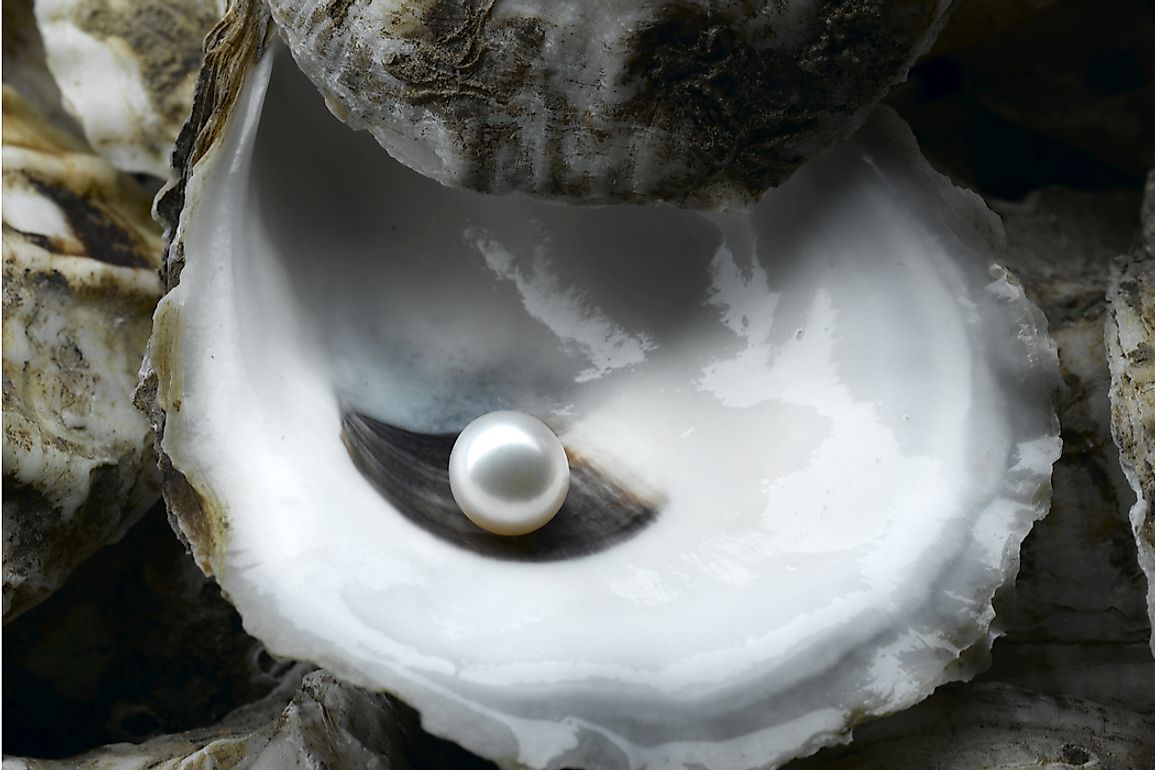How are Pearls Formed?

Pearls are known to the world as the oldest gem of unblemished perfection. Formed by living mollusks which live in bodies of water such as in oceans, rivers, and lakes, the pearl is majorly naturally produced. The pearl forms through a process that starts when an irritant gets into the mollusks at the mantle tissue. In reaction, the mollusks produce nacre, a thick organic liquid which builds on the stable irritant for a period to create the pearl. In the normal pearl formation process, one pearl is created at a time differing from the cultured pearls formed through nucleation to create multiple pearls.
Pearl Farming
The production of the cultured pearls takes place in well-managed farms that produce hundreds of thousands of pearls which are then supplied to different markets in the world. In the initial process of the pearl farm, the mollusks are assembled and seeded with irritants. Farmers used to collect these mollusks from their natural habitats but over the years have developed a breeding program for the mollusks which are then used to form the pearls. Just as it happens in the farming of plants, pearl farming is highly dependent on farming skills, weather conditions, and other natural and human-made factors. Any negative impacts on the farms lead to a reduction in the number of pearls produced which affects the price of the pearls in the market.
Natural Pearls vs. Pearl Culturing
The pearls formed through the culturing process was aimed to guarantee the market a steady supply of the highly demanded pearl. Japanese researchers called Tatsuhei Mise, Kokichi Mikimoto and Tokishi Nishikawa discovered the modern-day pearl culturing processes in both salt water and fresh water. Today, one can safely state that the culturing pearl forming process is the main source of pearls compared to the initial natural pearl forming process.
Marine Pearl Formation
Also called salt-water pearl formation, marine pearl formation takes place in mollusks found in saline water bodies. The marine culturing process occurs when the reproductive organ of the marine oyster is seeded with the bead which acts as the irritant with mantle tissue. The pearl formation process takes years after which the harvesting takes place. There are three kinds of marine cultured pearls which include Akoya pearls, Tahitian pearls, and South Sea pearls.
Freshwater Pearl Production
The freshwater pearl culturing process produces most of the pearls seen in the market today. They come from the pearl forming mollusks that live in freshwater bodies and emerge in diverse colors, sizes, and shapes. The world leader in freshwater pearl production has been China since the 13th century. In the recent times, this has greatly been affected due to the high rate of pollution which has reduced the number of healthy pearl producing mollusks. In the world over, the formation of good quality cultured freshwater pearls has been affected due to environmental disasters caused by global warming.
Pearl Quality
A majority of the pearls found in the markets are cultured while others are naturally made without any interference from humans. Certain characteristics greatly impact on the quality of the formed pearls such as the pearl size, color, shape, luster, pearl type, and thickness of the nacre present in the pearl forming process. There are diverse pearl treatments induced on the pearls to create high-quality pearls such as dyeing, irradiation and luster enhancement.







